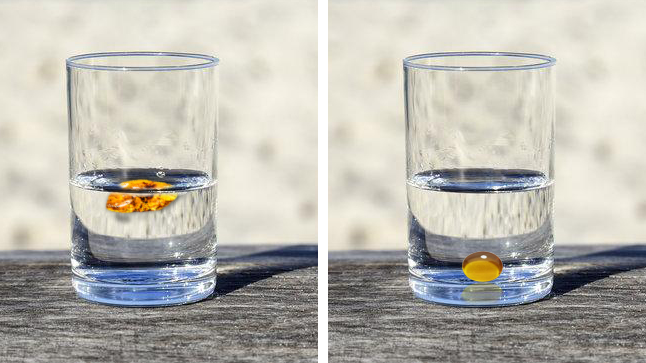Amber vs. Copal: Understanding the Differences and Unique Beauty of These Precious Stones
Amber and copal are stunning natural resins that have captivated humans for thousands of years. While they share many similarities, their origin, properties, and values are distinct. This comprehensive guide’ll delve into the fascinating world of amber and copal, exploring their unique characteristics and how to tell them apart. Whether you're a gemstone collector, jewelry maker, or simply an admirer of natural beauty, this article will help you appreciate these precious stones even more.
For a deeper understanding of the differences between amber and copal, and to explore more about these fascinating natural resins, visit The Beauty of Amber and Copal: Examining the Differences in Precious Stones.
What is Amber?
Amber is a fossilized tree resin that has undergone a process called polymerization, which hardens the resin over millions of years. It is typically found in shades of yellow, orange, and brown, although rarer colors like green, blue, and red can also occur. Amber is often associated with prehistoric times, as it sometimes contains preserved insects and plant material, offering a window into the ancient past.
Origins of Amber:
Amber is primarily found in regions that were once covered by ancient forests, such as the Baltic Sea region, the Dominican Republic, and Myanmar (formerly Burma). Baltic amber is the most well-known and widely available, dating back approximately 44 million years.
Properties of Amber:
- Age: Typically 1 million to over 100 million years old.
- Hardness: 2-2.5 on the Mohs scale.
- Color: Ranges from yellow to brown, with rare occurrences of green, blue, and red.
- Transparency: Can range from completely opaque to highly transparent.
- Inclusions: Often contains trapped insects, plant matter, or air bubbles, which can significantly increase its value.
What is Copal?
Copal is also a form of tree resin but is much younger than amber, typically ranging from a few hundred to a few thousand years old. While it shares a similar appearance to amber, copal has not undergone the extensive polymerization process, making it softer and more vulnerable to damage. Copal is often used as a substitute for amber in jewelry and decorative items.
Origins of Copal:
Copal is found in regions like Madagascar, Colombia, and Indonesia. It is harvested from living trees or found in the soil where it has been buried for centuries.
Properties of Copal:
- Age: Generally ranges from 100 to several thousand years old.
- Hardness: 1-1.5 on the Mohs scale, making it softer than amber.
- Color: Similar to amber, with shades of yellow, orange, and brown.
- Transparency: Typically more transparent than amber, with fewer inclusions.
- Inclusions: May contain insects or plant material, but these inclusions are usually less well-preserved than those in amber.

Key Differences Between Amber and Copal
While amber and copal may look similar at first glance, there are several key differences that set them apart:
-
Age and Formation: Amber is much older, often millions of years old, whereas copal is relatively young, ranging from a few hundred to a few thousand years old.
-
Hardness: Amber is harder and more durable, scoring 2-2.5 on the Mohs scale, while copal is softer, scoring only 1-1.5.
-
Inclusions: Amber often contains well-preserved inclusions of prehistoric insects or plants, which can significantly increase its value. Copal may also contain inclusions, but they are generally less distinct and less valuable.
-
Solubility: Copal is more soluble in organic solvents like alcohol or acetone, making it easier to test for authenticity. Amber is much less soluble and does not dissolve in these substances.
-
Heat Sensitivity: When exposed to heat, amber emits a pleasant pine-like scent, whereas copal gives off a more resinous odor and can become sticky.
How to Identify Amber and Copal
If you’re trying to determine whether a piece is amber or copal, there are a few tests you can perform:
-
Scratch Test: Gently scratch the surface of the stone with a needle. Amber is harder and will resist scratching more than copal, which is softer and may scratch easily.
-
Solubility Test: Place a small drop of alcohol or acetone on the surface. Copal may become sticky or show signs of dissolution, while amber will remain unaffected.
-
Heat Test: Warm a needle and press it against the stone. Amber will emit a pine-like scent, while copal will smell more resinous and may become sticky.
The Value of Amber and Copal
Amber is generally considered more valuable than copal due to its age, rarity, and the presence of well-preserved inclusions. Baltic amber, in particular, is highly prized for its quality and history. Copal, while less valuable, is still appreciated for its beauty and is often used as a more affordable alternative to amber in jewelry and decorative items.
Uses of Amber and Copal
-
Jewelry: Both amber and copal are commonly used in necklaces, bracelets, earrings, and rings. Amber is often more expensive and sought after, especially pieces with visible inclusions.
-
Decorative Items: Amber has been used for centuries in decorative objects, from intricate carvings to beads and amulets. Copal is also used in similar ways, particularly in regions where it is abundant.
-
Healing Properties: Amber is believed to have various metaphysical properties, such as promoting healing, protection, and positive energy. Copal is also thought to have spiritual significance, especially in indigenous cultures where it is used in rituals and ceremonies.
Amber and copal, while similar in appearance, are distinct in their origins, properties, and value. Whether you’re a collector, jewelry enthusiast, or simply captivated by the beauty of natural stones, understanding the differences between these two resins can enhance your appreciation and help you make informed choices. From the ancient, fossilized allure of amber to the younger, vibrant charm of copal, these precious stones continue to fascinate and inspire.
Explore the world of amber and copal further and discover the timeless beauty and history behind these incredible natural wonders.





